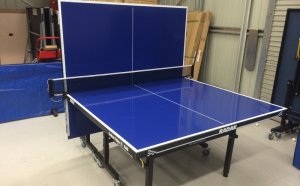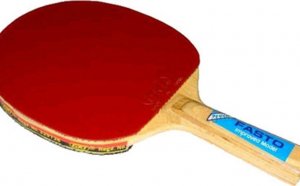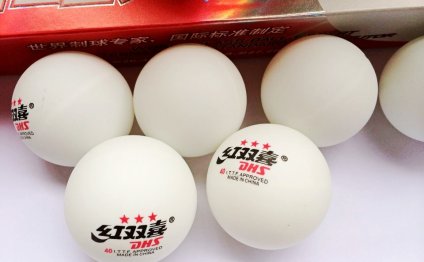
Best Table Tennis Balls
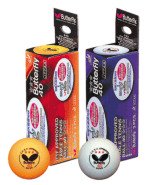 Top tips to help you choose your ideal table tennis balls.
Top tips to help you choose your ideal table tennis balls.
Part one - Are all TT balls the same?
Part One - Introduction & types of balls |
Table tennis balls are available in many different varieties so it's important that you know what to look for before choosing which ones you should buy.
Well, as table tennis has been a passion of mine since 1971, I'd love to share my knowledge with you. So let's take a look at the various types of balls that are available and also see what the rules say about them.
We'll also take a quick look at the two most recent major changes made to the ball which affected the size and material used to make them.
Then in part two we'll take a look at the list of authorised balls and see what criteria they need to meet in order to get onto the approved list.
So let's get started...
^ ^
But first, let's begin with a quick history lesson...
A search for the perfect table tennis ball
Ever since the game was first invented in the late 1800s, the search for the perfect table tennis ball has continued unabated.
Early versions of the game were unsuccessful because they were unable to find a suitable ball, and it was only when the celluloid ball was first introduced in the early 1900s that the game became popular.
But ever since then, the search has continued for a better ball, and different manufacturers have experimented with different materials in order to try and improve its playing characterics.
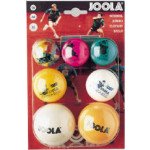 So let's take a quick look at the two most recent major changes made to the table tennis ball.
So let's take a quick look at the two most recent major changes made to the table tennis ball.
The first of these took place in the year 2000...
1. From 38mm balls to 40mm balls
Following trials in the late 1990s, the rules were amended with effect from 1 October 2000 and the size of the ball was changed from 38mm to 40mm.
The International Table Tennis Federation (ITTF) took the view that:
- The use of had increased the speed of the game and it needed to be slowed down
- By slowing the game down, the length of the rallies would increase, which in turn would make the game more appealing to television viewers, and
The second of the two most recent major changes to the table tennis ball took place in 2014...
2. From Celluloid to Plastic balls
In 2011 the ITTF decided that with effect from 1 July 2014, all ITTF events would only use table tennis balls made from plastic.
This is a major change and one which has caused a great deal of anxiety in the lower ranks of the sport.
The ITTF have said that the primary issue is with the manufacturing process used to make the current celluloid balls.
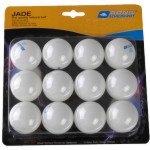 The raw materials are considered hazardous to health and many countries no longer allow manufacturers to use them, so the ITTF is hoping that by changing to balls made of plastic, that they will avoid any future shortage of balls (due to shortages of the raw materials required to make celluloid balls).
The raw materials are considered hazardous to health and many countries no longer allow manufacturers to use them, so the ITTF is hoping that by changing to balls made of plastic, that they will avoid any future shortage of balls (due to shortages of the raw materials required to make celluloid balls).
The new plastic balls are also known as "Poly" balls and are mandatory for all ITTF events starting from 1 July 2014.
However, the ITTF have said that celluloid balls will continue to be "legal" for all other events for at least two more years, and possibly longer.
One of the contentious issues about the new Poly ball is that, due to the different manufacturing process used, it will be slightly larger than the current 40mm celluloid balls, even though it will still be within the ITTF tolerance permitted.
So what do the rules now say about the...
Table tennis ball
The state that the ball shall be:
- spherical, with a diameter of 40mm and
- weigh 2.7g and
- be made of celluloid or similar plastics material and
- be white or orange, and matt
So, are all balls the same?
Star quality
Table tennis balls are not all the same. There are many different types available and each one will be suitable for a different purpose.
Let's take a look at each of them...
Fun / Novelty Balls
Firstly there are the fun/novelty balls.
These are available in lots of different colours and sizes and are particularly suitable for children and for fun, recreational play.
They can vary from very soft to very hard, and can usually be bought in packs of all one size or in mixed packs.
 However, unless they are white or orange and 40mm diameter balls, they cannot be used in competitions.
However, unless they are white or orange and 40mm diameter balls, they cannot be used in competitions.
Practice / Training Balls
Next, there are balls known as practice or training balls.
These are generally a softer ball and are best suited for a young child or beginner who is practising or training.
These balls are not usually very durable and are susceptible to breaking when hit hard.
However, they're usually white or orange 40mm diameter balls, so they can be used in competitions, although I wouldn't recommend them.
One Star Balls
Then there are balls which are classified as one star.
These are suitable for use at places such as schools and youth clubs.
Like the practice balls, these are also generally a softer ball which are susceptible to breaking when hit hard, but are usually legal for use in competitions.
Two Star Balls
Then there are two star balls.
These are generally suitable for use by improvers and can also be used in a robot, or for multi-ball practice.
They will not be of the highest quality, but are a good enough substitute for three star balls in a non-match play situation.
They'll generally be balls which failed to meet the higher standard required for three star balls.
Three Star Balls
And finally, there are the top quality three star balls.
These are the highest quality balls available and are the only type which are authorised by the International Table Tennis Federation.
If you're serious about playing table tennis, these are what you need.
They meet all the requirements of stringent tests set by the ITTF and are the most durable of all.
The ITTF list of approved balls contains many different makes, but my personal favourites are the three star Butterfly and Nittaku balls.
Butterfly, Stiga, Joola & more
The International Table Tennis Federation produce a list of authorised 40mm table tennis balls, but before any ball can be placed on the authorised list, it must go through a rigourous testing programme.
In we'll take a look at the list of authorised balls and see what criteria they need to meet in order to get onto the approved list.
See also:- Since the requirements for apostille on California apostille.
RELATED VIDEO
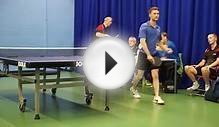
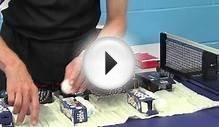
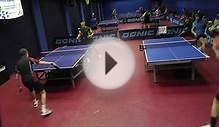
Share this Post
Related posts
Outdoor Table Tennis Balls
Growing up with a family of ping pong players, we went through ping pong balls very quickly. We literally would crack 2 or…
Read MoreBest Table Tennis Racquet
Towards the end of the season my rubbers were losing grip and fraying at the edges. And then I cracked my blade on the table…
Read More
